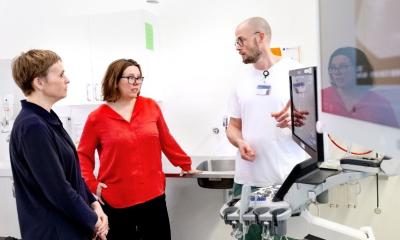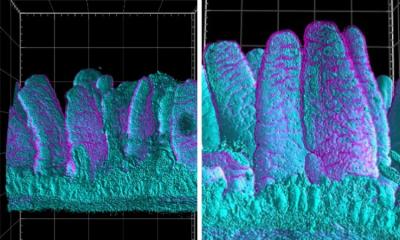Current aggressive IVF treatments put patients at risk
Dutch researchers show health and cost benefits in `milder´ approach
The Netherlands — In-vitro fertilisation (IVF) is an overly aggressive treatment and needlessly exposes childless women to substantial risks of complications and serious discomfort, according to researchers at the University Medical Centre, in Utrecht.
During standard IVF treatment, high drug doses are used to stimulate the ovaries – but these cause menopausal symptoms such as sweating, flushing, depression and loss of libido for two to three weeks. From a study comparing mild and standard IVF treatments, which involved 404 patients, the Utrecht team concluded that lower drug doses are not only as effective as higher doses, but also less unpleasant.
Reporting in The Lancet Bart C J M Fauser and colleagues said: ‘Our findings should encourage more widespread use of mild ovarian stimulation and single embryo transfer in clinical practice. However, adoption of our mild IVF treatment strategy would need to be supported by counselling both patients and healthcare providers to redefine IVF success and explain the risks associated with multiple pregnancies.’
The mild version also proved cheaper at ?8,333 per pregnancy, compared with ?10,745 for standard treatment. The researchers also point out that replacing one embryo in the womb at a time, instead of the usual two embryos, achieved almost the same live birth rate – 44% – over a year, whilst it also dramatically cut the chances of producing twins.
Also writing in The Lancet, IVF specialist Professor William Ledger, of the University of Sheffield, commented that as success rates in IVF have risen in recent decades, attention has turned to improving the safety of the procedure. ‘Some patients want to complete the procedure as quickly as possible and see twins as the most desirable outcome,’ he added. ‘While 75% of IVF treatment in the UK continues to be paid for by the patients themselves, many couples will opt for double embryo transfer because it is much less costly.’
It was pointed out that the standard treatment could produce twins but using the mild treatment to produce a single baby would mean the patient paying for a further treatment cycle.
Multiple births carry a higher risk of complications for mother and babies, including an increased risk of being born prematurely. Replacing one embryo, and freezing another for use in a second attempt if necessary, cut the twin rate to one in 200 births compared with one in eight births when two embryos were replaced at the same time.
Twin births have risen by 66% in Britain from 6,000 a year in 1975 to almost 10,000 a year today, driven by the increase in IVF. One in four IVF pregnancies leads to the birth of twins compared with one in 80 natural conceptions.
An expert group commissioned by the Human Fertilisation and Embryology Authority (HFEA) in the UK recommended last October that tough controls be introduced to cut the number of patients in whom two embryos are replaced. The report is to go out to public consultation next month and the HFEA is due to announce its new policy in the autumn. A spokesman said: “We know that multiple births are the single biggest risk for mothers and children.”
(The Lancet. 2/3/07. ‘A mild treatment strategy for in-vitro fertilisation: A randomised non-inferiority trial’).
08.03.2007










